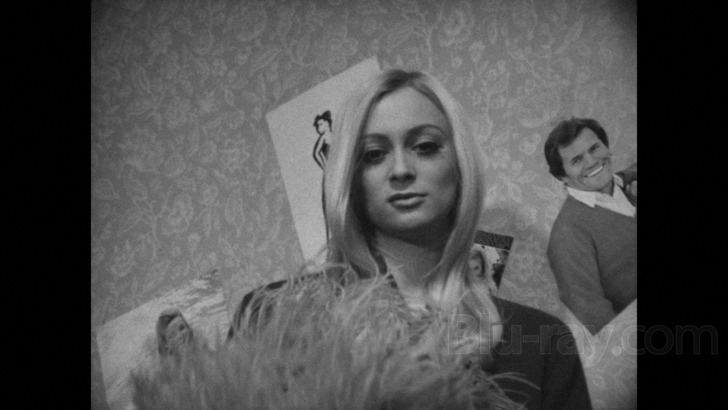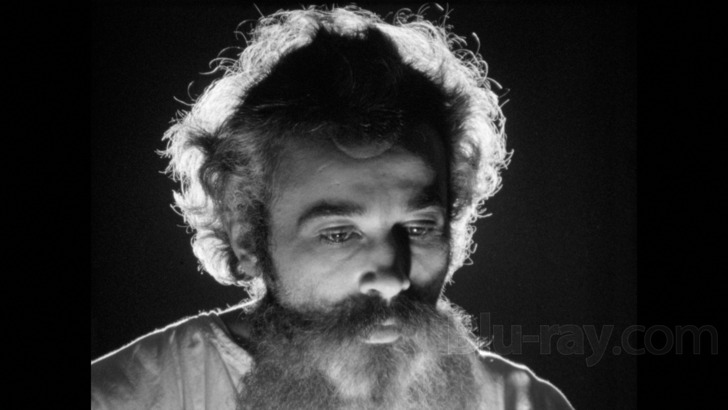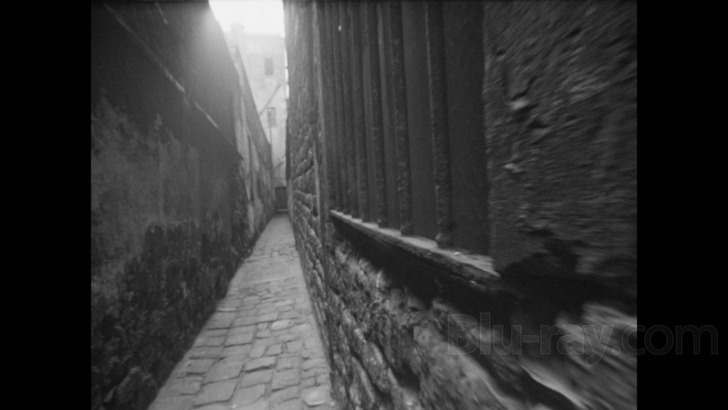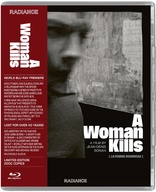A Woman Kills Blu-ray Movie
HomeA Woman Kills Blu-ray Movie 
La Femme Bourreau | Limited EditionRadiance Films | 1968 | 69 min | Not rated | Feb 07, 2023
Movie rating
6.7 | / 10 |
Blu-ray rating
| Users | 0.0 | |
| Reviewer | 4.0 | |
| Overall | 4.0 |
Overview
A Woman Kills (1968)
Paris, in the 1960s. A series of crimes troubles the public tranquility. On March, 22, 1968, Hélène Picard, a prostitute sentenced to death two years before for several murders, is killed by executioner Louis Guilbeau. Immediately, the violent crimes, similar to Hélène's ones, go on again. In parallel, Louis is having an affair with the police woman in charge of the investigation... What are the obscure relations hidden behind the executioner and the mysterious killer? Who is this dark man in reality?
Director: Jean-Denis Bonan| Foreign | Uncertain |
| Crime | Uncertain |
Specifications
Video
Video codec: MPEG-4 AVC
Video resolution: 1080p
Aspect ratio: 1.33:1
Original aspect ratio: 1.37:1
Audio
French: LPCM 2.0 Mono
Subtitles
English SDH
Discs
Blu-ray Disc
Single disc (1 BD)
Playback
Region A (B, C untested)
Review
Rating summary
| Movie | 4.0 | |
| Video | 4.0 | |
| Audio | 4.0 | |
| Extras | 5.0 | |
| Overall | 4.0 |
A Woman Kills Blu-ray Movie Review
Reviewed by Jeffrey Kauffman January 26, 2023There have been a number of tragic and disturbing news reports lately in the United States involving multiple fatalities, including two mass shootings in California and a horrifying quadruple murder in Idaho, and while the alleged perpetrators of those crimes may not be "serial killers" per se (at least as is currently known as this review is being written), talking heads discussing these incidents on various broadcasts and writing about them in print media have repeatedly made the assertion that it's almost always a male who commits this kind of atrocity. If female assassins have long been a staple of film courtesy of such outings as Red Sparrow, Hanna, and La Femme Nikita (among countless others), female serial killers have been a somewhat more rare cinematic staple, though interestingly in that regard last year's Pearl certainly serves as a potent example that that particular kind of character has not been totally ignored by filmmakers. The title of A Woman Kills may be hinting that this fascinating 1968 film from Jean-Denis Bonan may be a considerably earlier example of a female serial killer, though without posting any outright spoilers suffice it to say that there's a bit of misdirection at hand, and one way or the other, any "killings" in the film may kind of ironically be secondary to the actual mood of a piece that relies less on traditional narrative than a stifling atmosphere of despair and, a propos its time frame, nascent revolutionary elements bubbling up in French culture.

Radiance Films has been overtly hyping the fact that in a very real way A Woman Kills was a lost film for several decades, and this is its first release anywhere on Blu-ray (as with all Radiance releases, there is both this one for Region A and this one for Region B). The notoriety of this particular film may kind of ironically fade when compared to a previous short done by Bonan, a 1966 opus entitled Tristesse des anthropophages, a film which rather interestingly presaged a certain idea presented scabrously if less overtly in Luis Buñuel's The Phantom of Liberty almost ten years later where banquet guests were seated on toilets. Suffice it to say, Bonan's effort evidently took that general idea to extremes (and he in fact cites Buñuel as a major influence), having dinner guests feasting on human waste in what Bonan in one of the supplements on this disc states was a critique of "consumption mentality", which he evidently abhors. That short was initially highly praised and got Bonan a deal for a feature, but once French censors put the kibosh on the short, Bonan found his fortunes seemingly irreversibly hampered.
Bonan himself also talks about his almost overt "invention is the mother of necessity" technique of attempting in one of his shorts to craft some kind of narrative by more or less cutting and pasting together unused frames from some of his other projects. While ostensibly more knit together than that enterprise, this is a film that delivers an understandable narrative within certain confines, but which still has an almost dissociative quality to it, something that's delivered in a virtually "meta" state early in the story when some voiceover announces that focal character Louis Guilbeau (Claude Merlin) may be experiencing something akin to post traumatic stress disorder after having served in the French army during the Algerian crisis.
This narration gives a rather concentrated info dump that the rest of the film never quite attains, but one way or the other, Louis is introduced as a civil servant working for the Ministry of Justice who has had a history of paranoia and who, as the story opens, is meeting with a police superintendent named Solange Pradel (Solange Lebas) in order to perhaps be transferred from his position. This is happening within the context of a supposed female serial killer having been executed for herself having executed a number of prostitutes, though disturbingly, after the supposed killer's death, more murders have kept happening. Even this ostensibly straightforward narrative scene is refracted courtesy of Bonan's disjunctive editing style, which offers a bunch of different perspectives of Louis, some radically skewed, and absolutely no appearance by Solange. And that's just the tip of a rather audacious presentational iceberg.
A Woman Kills isn't especially discursive about a supposed "twist" that won't be discussed in detail here, other than to say it's part of the misdirection of the film's title, and is actually kind of yet another "throwaway" plot element, especially since it's more or less overtly detailed by the twenty minute mark. But this is probably just another example of how bracingly anarchic Bonan wants to be with the film, as if to deconstruct putative plot twist purveyors with a kind of shrug and cheeky "so what, now you know". This whole bit of supposed subterfuge is just part of a film that also utilizes a lot of actual footage of demonstrations in the streets of France in 1968, which, perhaps somewhat like Medium Cool and Haxell Wexler, disclose a documentarian side to Bonan.
There are a number of frankly odd and probably unneeded ingredients thrown into this heady casserole, including some supposed erotic flourishes that may be more comical than titillating. Due to Bonan's already infamous reputation at the time of this film's production, its once planned on distribution never materialized, and it sat, largely forgotten for decades, until Luna Park resurrected it in 2010 for a DVD. It's a bizarre, provocative piece that toys with a number of potentially controversial aspects, all within a bold presentational style.
A Woman Kills Blu-ray Movie, Video Quality 

A Woman Kills is presented on Blu-ray courtesy of Radiance Films with an AVC encoded 1080p transfer in 1.33:1. Radiance's insert booklet contains the following preliminary information on the transfer:
A Woman Kills was restored by Luna Park Films from the original lab elements and supplied to Radiance Films as a high definition digital file.Those brief comments then point the interested reader about an interview with Lecomte also included in the insert booklet. There's some interesting history and more technical information imparted in this interview, including the fact that the film was shot on reversible 16mm black and white, with no negative, and that the only two original elements were the pre-editing 16mm image and the pre-mix 16mm magnetic sound. Lecomte further conveys that in 2013 image and soundtrack elements were digitized and his team picked up with editing the unfinished film.
The restoration was overseen by Francis Lecomte at Les Archives francaises du Film / La Cinematheque de Nouvelle-Aquitaine.
Considering the history of the production, this is often a fantastic looking transfer, though more persnickety types should be aware that there is still quite a bit of age related wear and tear in store, as can be gleaned from some of the screenshots I've uploaded to accompany this review. There are quite a few hairline scratches (see the middle of the frame in the first screenshot), occasional debris stuck in the gate (see the top of the frame in screenshot 13), along with some more severe scratching and damage (see screenshot 18) and what may be mold spores that climb through the frame (see screenshot 17). All of this said, there is still a remarkably evocative look to a lot of the transfer, with some nicely modulated gray scale and some commendable detail levels. Detail and especially fine detail can admittedly ebb and flow due to some of Bonan's stylistic flourishes in terms of lens distortions and askew framings, but generally speaking this retains a nice organic quality. Some of the darkest moments where mist or smoke intrude may just slightly flirt with macroblocking (see screenshot 19). My score is 4.25.
A Woman Kills Blu-ray Movie, Audio Quality 

A Woman Kills features an LPCM 2.0 Mono track in the original French. There's some interesting quasi-hallucinatory sound design combined with an eclectic score by Bernard Vitet that help to establish the nightmarish quality of the story. A surprisingly layered sound design (for what must have been a micro budgeted feature) is well represented here, though occasional high frequency sound effects can be a bit brash. Dialogue and voiceover/narration are all rendered cleanly and clearly. Optional English subtitles are available.
A Woman Kills Blu-ray Movie, Special Features and Extras 

- Introduction by Virginie Sélavy (HD; 4:53) offers some background on Bonan and the cultural zeitgeist of France in 1968 that suddenly provided him with the opportunity for some unexpected "local color". This is accessible either under the Special Features Menu, where it's a standalone offering, or under the Play Menu, where it is authored to move directly on to the feature.
- Audio Commentary by Kat Ellinger and Virginie Sélavy
- On the Margin: The Cursed Films of Jean-Denis Bonan (HD; ) is a really excellent documentary originally produced by Luna Park Films in 2015, which has had some additional footage added in 2022. Bonan and several other collaborators are interviewed and Bonan's treacherous history in the French film industry is explored. In French with English subtitles.
- Short Films offer some of the now infamous early pieces by Bonan:
- The Short Life of Monsieur Mercieu (1962) (HD; 13:04)
- A Crime of Love (1965), Rushes (HD; 6:53) is an unfinished project, here with commentary by Bonan (in French, with English subtitles). This is heavily windowboxed at the beginning.
- Sadness of the Anthropophagi (1966) (HD; 23:38)
- Crazy Mathieu (1967) (HD; 17:01)
- A Season with Mankind (1967) (HD; 18:43)
A Woman Kills Blu-ray Movie, Overall Score and Recommendation 

This release augurs well for Radiance Films' emphasis on unearthing cult items, and while this certainly won't be a film for everyone, it's presented here with generally solid technical merits and some outstanding supplements. Recommended.
Similar titles
Similar titles you might also like

Big Time Gambling Boss
博奕打ち 総長賭博 / Bakuchi-uchi sōchō tobaku | Standard Edition
1968

The Case Is Closed, Forget It
L'istruttoria è chiusa: dimentichi
1971

Twilight
1990

The Black Report
Black Statement Book
1963

The Rambling Guitarist
ギターを持った渡り鳥 / Guitar wo Motta Wataridori
1959

Stray Cat Rock: Wild Jumbo
1970

Stray Cat Rock: Delinquent Girl Boss
1970

A Man on His Knees
Un uomo in ginocchio
1979

The Hitman: Blood Smells Like Roses
ザ・ヒットマン 血はバラの匂い / Chi wa bara no nioi
1991

Burning Dog
1991

Carlos
カルロス
1991

The Okinawa War of Ten Years
沖縄10年戦争 / Okinawa jû-nen sensô
1978

By a Man's Face Shall You Know Him
男の顔は履歴書
1966

The Adventures of Arsène Lupin
Les aventures d'Arsène Lupin
1957

The Sunday Woman
La donna della domenica | Standard Edition
1975

Hokuriku Proxy War
北陸代理戦争 / Hokuriku dairi sensô | Limited Edition
1977

I'll Be Alone After Midnight
Je Serai Seule Après Minuit
1931

La Poison
1951

The Monster of London City
Das Ungeheuer von London-City
1964

The Silence
1998
